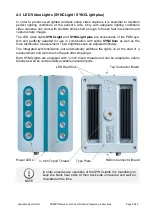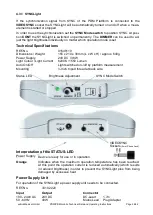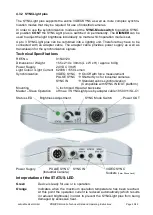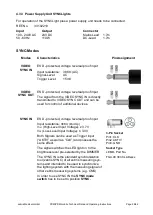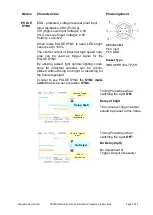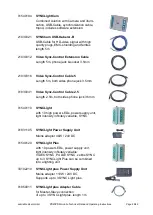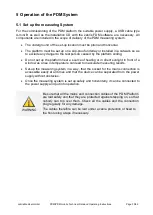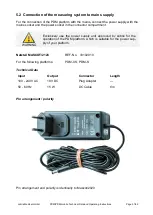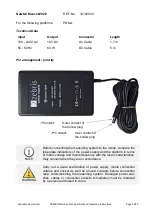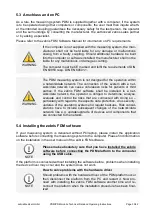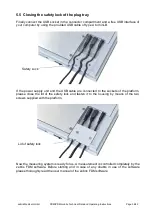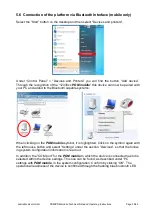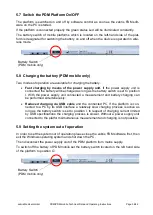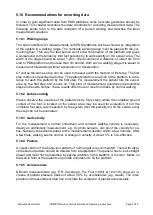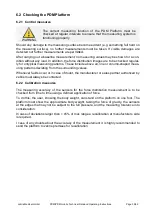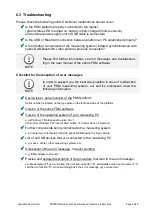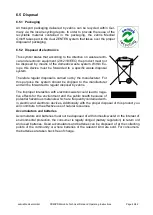
zebris Medical GmbH
PDM/PDM mobile Technical Data and Operating Instructions
Page 37/42
5.10
Recommendations for recording data
In order to gain significant data from PDM platforms some principle guidelines should be
followed. This chapter describes the ideal conditions for recording measurement data: The
following points refer to the data reception of a person walking and describe the ideal
measurement situation.
5.10.1 Walking range
The best conditions for measurements with PDM platforms will be achieved by integration
of the system in a walking range. The complete walking range must be plane with the sur-
rounding floor. This way the test person won’t know the position of the platform and gives
a workaround to the tendency that test persons try to walk exactly on the sensor area. The
width of the stage should be about 1,20m. We recommend a distance of about 4m from
start to PDM platform and no less than 3m behind. With such a walking stage it is easier to
measure normal walking without acceleration or deceleration.
Of course the same set up can be used to measure with the method of first step. The first
step method is described as follow: The patient stands on one side of the platform in a dis-
tance to reach the platform by the first step. For measurement the patient hits the sensor
area by the first step and moves on. This kind of measurement guaranties reproducible
steps and results. Notice: These results differ more or less from these by normal walking.
5.10.2 Data recording
Please observe the exercise of the patient strictly. Only steps where the complete ground
contact of the foot is located on the sensor area may be used for evaluation. If not the
complete foot area was measured by the system (foot did partially not hit the sensor area)
the step can not be evaluated.
5.10.3 Gait velocity
For the measurement a normal (individual) and constant walking velocity is necessary.
Ideally an additionally measurement, e.g. by photo sensors, can proof the velocity for no-
tice. Naturally the patients adapt to the measurement situation within a few minutes. After
a few trials, walking seems normal. A change in velocity of about 5 % is non-effective.
5.10.4 Posture
A visual control of the behaviour pattern of normal gait is recommended. Trials with atypi-
cal behaviour pattern should be deleted from interpretation. The patient has to look straight
ahead and must not be disturbed by paying attention to the platform or monitor. Marks on
the wall in front of the patient can provide orientation to hit the platform.
5.10.5 Acrosclerosis
Different measurements (e.g. P.R. Cavanagh,
The Foot
(1994)
4
, 123-135) show an in-
crease of plantar pressure peaks of about 30 % by acrosclerosis (e.g. weals). The inter-
pretation of measurement data has to include the existence of plantar acrosclerosis.

